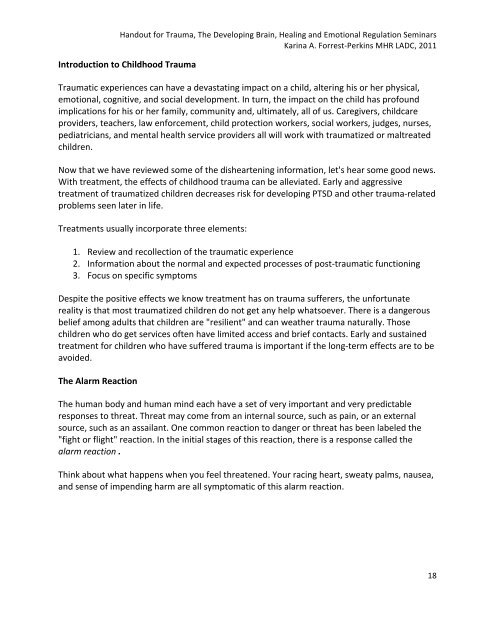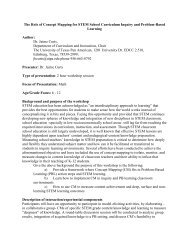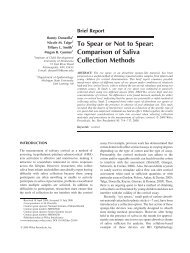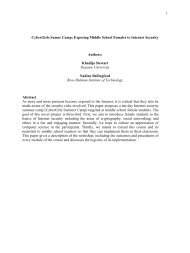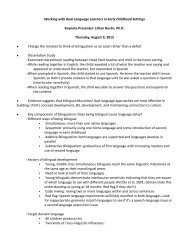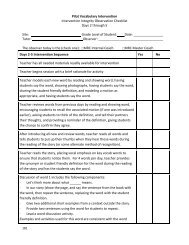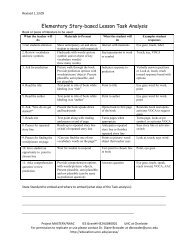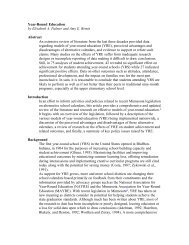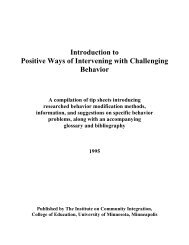Trauma and the Developing Brain - College of Education & Human ...
Trauma and the Developing Brain - College of Education & Human ...
Trauma and the Developing Brain - College of Education & Human ...
You also want an ePaper? Increase the reach of your titles
YUMPU automatically turns print PDFs into web optimized ePapers that Google loves.
H<strong>and</strong>out for <strong>Trauma</strong>, The <strong>Developing</strong> <strong>Brain</strong>, Healing <strong>and</strong> Emotional Regulation Seminars<br />
Karina A. Forrest-‐Perkins MHR LADC, 2011<br />
Introduction to Childhood <strong>Trauma</strong><br />
<strong>Trauma</strong>tic experiences can have a devastating impact on a child, altering his or her physical,<br />
emotional, cognitive, <strong>and</strong> social development. In turn, <strong>the</strong> impact on <strong>the</strong> child has pr<strong>of</strong>ound<br />
implications for his or her family, community <strong>and</strong>, ultimately, all <strong>of</strong> us. Caregivers, childcare<br />
providers, teachers, law enforcement, child protection workers, social workers, judges, nurses,<br />
pediatricians, <strong>and</strong> mental health service providers all will work with traumatized or maltreated<br />
children.<br />
Now that we have reviewed some <strong>of</strong> <strong>the</strong> disheartening information, let's hear some good news.<br />
With treatment, <strong>the</strong> effects <strong>of</strong> childhood trauma can be alleviated. Early <strong>and</strong> aggressive<br />
treatment <strong>of</strong> traumatized children decreases risk for developing PTSD <strong>and</strong> o<strong>the</strong>r trauma-‐related<br />
problems seen later in life.<br />
Treatments usually incorporate three elements:<br />
1. Review <strong>and</strong> recollection <strong>of</strong> <strong>the</strong> traumatic experience<br />
2. Information about <strong>the</strong> normal <strong>and</strong> expected processes <strong>of</strong> post-‐traumatic functioning<br />
3. Focus on specific symptoms<br />
Despite <strong>the</strong> positive effects we know treatment has on trauma sufferers, <strong>the</strong> unfortunate<br />
reality is that most traumatized children do not get any help whatsoever. There is a dangerous<br />
belief among adults that children are "resilient" <strong>and</strong> can wea<strong>the</strong>r trauma naturally. Those<br />
children who do get services <strong>of</strong>ten have limited access <strong>and</strong> brief contacts. Early <strong>and</strong> sustained<br />
treatment for children who have suffered trauma is important if <strong>the</strong> long-‐term effects are to be<br />
avoided.<br />
The Alarm Reaction<br />
The human body <strong>and</strong> human mind each have a set <strong>of</strong> very important <strong>and</strong> very predictable<br />
responses to threat. Threat may come from an internal source, such as pain, or an external<br />
source, such as an assailant. One common reaction to danger or threat has been labeled <strong>the</strong><br />
"fight or flight" reaction. In <strong>the</strong> initial stages <strong>of</strong> this reaction, <strong>the</strong>re is a response called <strong>the</strong><br />
alarm reaction .<br />
Think about what happens when you feel threatened. Your racing heart, sweaty palms, nausea,<br />
<strong>and</strong> sense <strong>of</strong> impending harm are all symptomatic <strong>of</strong> this alarm reaction.<br />
18


